- Markforged Onyx Filament Review & Alternatives [2024] - December 11, 2024
- 17 Best Professional 3D Printers: Commercial, Desktop, & Industrial [2024] - December 10, 2024
- Best 3D Printers (Industrial, Desktop, & More) [2024 Guide] - July 20, 2024
As the 3D printing industry evolves at breakneck speed, printing materials are becoming just as diverse and advanced as the printers themselves. Among these cutting-edge materials, flexible resin, Thermoplastic Polyurethane (TPU), and other elastomeric filaments are opening up a whole new realm of possibilities in additive manufacturing.
This all-inclusive guide delves into the differences between flexible filaments and flexible resins, provides an overview of their numerous applications, and explains the distinct advantages–and disadvantages–that set them apart.
What is Flexible 3D Printing?
Flexible 3D printing is the process of creating three-dimensional objects using printing materials that are pliable and elastic. Unlike 3D printing processes that use rigid materials such as plastic or metal, flexible 3D printing uses lightweight materials like flexible resin, thermoplastic elastomers, polyurethane, and silicone. These materials give the final products unique properties, such as the ability to bend, stretch, and compress without losing their original shape.
Flexible 3D Printing Use Cases
Flexible 3D printing holds the potential to revolutionize several industries, paving the way for innovative applications and solutions.
1. Functional Prototypes
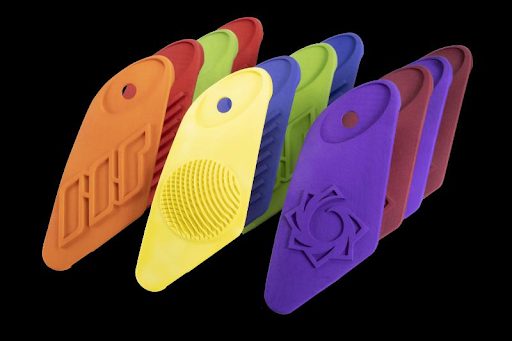
Flexible 3D printing is a versatile solution for creating functional prototypes, empowering designers, engineers, and inventors to transform their ideas into tangible, working models. The elasticity imbued by flexible 3D printing filament enables the production of objects with varying degrees of rigidity. Flexible 3D printing materials allows for the creation of prototypes that closely mimic the properties of final products that require various degrees of stretching, impact resistance, and shock absorption, resulting in more accurate and realistic testing.
This technology also provides design freedom for intricate shapes, accelerating product development and fostering experimentation.
2. Sportswear & Footwear
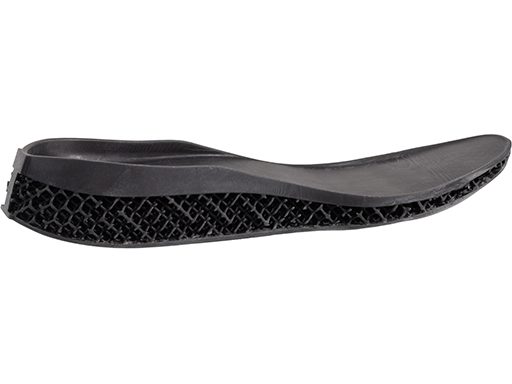
Flexible 3D printing is propelling sportswear and footwear innovation, enabling the creation of tailored, high-performance products. This technology allows precise control over garment properties, such as breathability, moisture-wicking, and elasticity. It also permits the personalization of aesthetics, spurring demand for unique, cutting-edge athletic gear tailored to individual needs and preferences, ultimately enhancing comfort and functionality.
Flexible 3D printing technology also allows for the integration of sensors and electronics within sportswear–paving the way for smart garments that monitor and analyze biometrics, offering valuable insights into an athlete’s performance.
3. Pipes and Manifolds
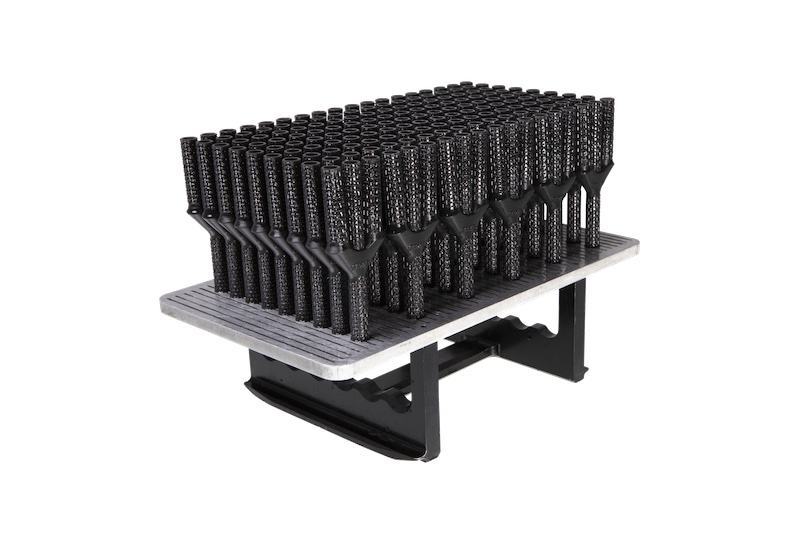
One of the main benefits of flexible 3D printing for pipe and manifold production is the ability to fabricate complex, organic forms that minimize pressure drops and improve fluid flow. Engineers can optimize the internal geometry of pipes and manifolds to reduce turbulence and ensure smoother transitions between sections–ultimately enhancing the overall efficiency of liquid transport systems.
With a variety of suitable materials, including corrosion-resistant metals, heat-resistant ceramics, and durable polymers, it ensures compatibility and durability under varying conditions. By producing components on-demand and using only the required material, this technology helps reduce waste and inventory needs, promoting cost-effectiveness and sustainability.
4. Handles and Grips
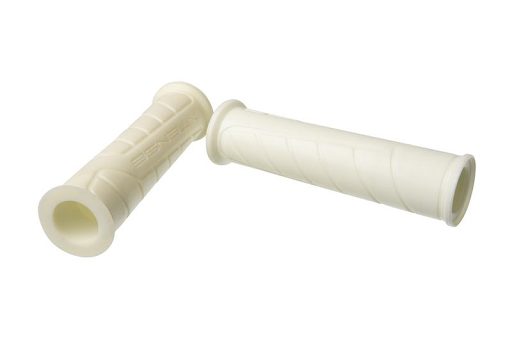
Flexible 3D printing processes can create tailored, ergonomic handles and grips for various applications, from tools and sports equipment to consumer products. One key advantage of flexible 3D printing in handle and grip production is the ability to print bespoke designs that conform to individual users’ preferences and anatomical characteristics. By utilizing biometric data like palm and finger prints, engineers and designers can develop ergonomically optimized handles that minimize strain and fatigue to significantly improve the overall user experience.
In terms of material selection, flexible 3D printing can be done with an array of suitable materials for handles and grips, including thermoplastic elastomers and flexible resins. Users can choose materials based on their tactile properties, such as softness, grip, and slip resistance, as well as their resistance to chemicals, UV exposure, and temperature fluctuations. This technology also allows for aesthetic customization, such as branding and personalization.
5. Seals and Gaskets
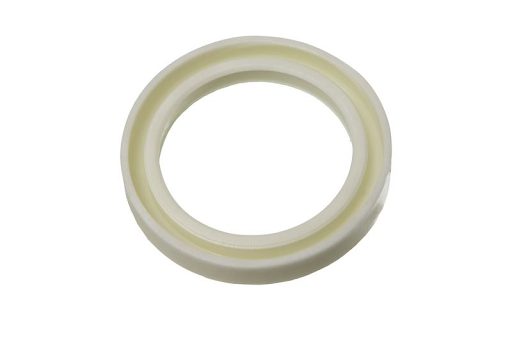
Flexible 3D printing offers versatile solutions for seals and gaskets, enabling custom designs and complex internal structures such as channels and lattice patterns. Users can tailor these structures to achieve the desired balance between compressibility and resilience, ensuring that the components maintain their sealing performance over extended use.
With diverse material options, components can withstand chemicals, temperature extremes, and pressure, as well as their ability to conform to irregular surfaces and recover from deformation. This technology contributes to cost reduction and sustainability by minimizing waste and inventory needs and providing economic and environmental benefits.
3D Printing with Flexible Filaments
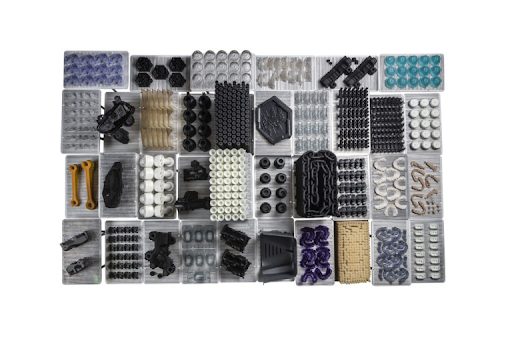
The following sections explore the differences between elastomers and TPU and the benefits and challenges of 3D printing with flexible filaments.
Elastomers vs TPU
Elastomers and thermoplastic polyurethane (TPU) are distinct material categories with unique properties and applications in flexible 3D printing. Elastomers, characterized by their elasticity, are ideal for highly flexible components like gaskets, seals, and wearables. TPU, a specific elastomer type, merges thermoplastic and urethane rubber properties, offering excellent abrasion resistance, durability, and flexibility.
TPU’s versatility in hardness enables a broader range of mechanical properties, making it popular for parts like hoses, protective covers, and shock-absorbing elements.
Benefits of 3D Printing with Flexible Filaments
Among the advantages of 3D printing with flexible filaments, three fundamental properties stand out: impact resistance, resilience and durability, and shock absorption.
Impact Resistance
3D printing with flexible filaments like elastomers and TPU offers significant impact resistance, enabling durable components that withstand external forces and maintain structural integrity. ensure increased lifespan and safety, reducing the need for replacements or repairs. These properties are especially valuable in the automotive, aerospace, and sports equipment industries, where parts face frequent impacts and stresses.
Resilient & Durable
3D printing with flexible filaments provides resilience and durability, enabling components to endure mechanical stresses and maintain shape and functionality. These properties are valuable in applications requiring frequent use and resistance to wear or environmental degradation.
This makes them suitable for use in industries like automotive, aerospace, and industrial equipment manufacturing, where long-lasting performance in demanding environments is crucial.
Offers Shock Absorption
3D printing with flexible filaments offers crucial shock absorption, enabling components that dissipate energy and protect against impacts or vibrations. This property is vital for safeguarding delicate internal components or users in the automotive, aerospace, and consumer electronics industries. Flexible filaments also enhance user comfort and safety in sports equipment, footwear, and wearable devices, minimizing impact and reducing injury risk.
Challenges to Using Flexible Filaments for 3D Printing
Despite the numerous advantages of 3D printing with flexible filaments, this technology presents challenges that can impact the printing process and final product quality.
Stringing or Clogging
Stringing and clogging are common challenges when 3D printing with flexible filaments affects print quality and efficiency. Stringing, caused by filament oozing between print locations, can be minimized by fine-tuning print settings like retraction, temperature, and travel speed.
Clogging, resulting from filament obstruction in the extruder or nozzle, can be mitigated by using the correct temperatures–temperature differences is usually one of the main causes of clogs–or modifying the extruder and including a filter to catch any debris on the nozzle.
Hygroscopic
Hygroscopic behavior, typical in flexible filaments like TPU and specific elastomers, can affect print quality and component performance. Moisture absorption can cause inconsistent extrusion, poor layer adhesion, and compromised structural integrity.
To address this, store filaments in a dry environment, such as a sealed container with desiccant packs, and dry them before printing using a filament dryer or low-temperature oven to ensure optimal print quality.
Can Require Slower Print Speeds
3D printing with flexible filaments often requires slower print speeds due to the materials’ elasticity and low rigidity, which can affect efficiency and productivity. Slower speeds increase print time, potentially limiting throughput and impacting time-sensitive or high-volume projects.
Additionally, lower rates may result in more pronounced layer lines or visible artifacts, necessitating additional post-processing for desired surface quality or appearance.
Flexible Resin 3D printing
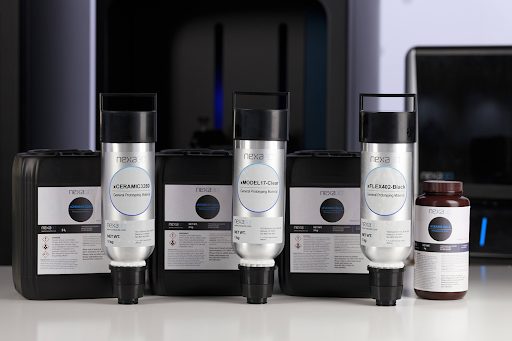
Flexible resin 3D printing is an emerging approach within the field of additive manufacturing, expanding the capabilities of resin-based 3D printing technologies to produce components with elastic properties. This method leverages specially formulated resins that exhibit flexibility and elasticity, enabling the creation of parts that can deform and return to their original shape without breaking.
As an alternative to traditional flexible filament 3D printing, resin 3D printers offer unique benefits and applications, particularly in industries that demand intricate designs and high-resolution prints.
Flexible vs Elastic vs Soft vs Rubber-like Resins
When discussing resins for 3D printing, the terms flexible, elastic, soft, and rubber-like describe various materials with distinct properties. Understanding the nuances between these classifications is essential for selecting the appropriate resin to meet specific application requirements.
Flexible Resins
Flexible resins can produce parts with a certain degree of bendability, allowing them to withstand minor deformations without breaking or cracking. These resins are ideal for applications that require components to flex slightly under stress or to provide a cushioning effect. However, flexible resins may not fully recover their original shape after significant deformation.
Elastic Resins
Elastic resins possess a higher degree of elongation and can endure more extensive deformation than flexible resins. Components printed with elastic resins can stretch, compress, or twist and still return to their original shape, making them suitable for applications that demand high resilience and repeated deformation.
Soft Resins
Soft resins produce parts with lower hardness and increased compressibility, resulting in a more compliant feel when touched or squeezed. These materials are ideal for applications prioritizing user comforts, such as wearable devices, ergonomic grips, or medical models mimicking soft tissues.
Rubber-like Resins
Rubber-like resins closely mimic the properties of natural or synthetic rubber, offering a combination of flexibility, elasticity, and durability. Components printed with rubber-like resins exhibit excellent resistance to wear, impact, and abrasion, making them suitable for applications that require highly resilient parts, such as seals, gaskets, or vibration dampeners.
Flexible Resin 3D Printing Benefits
Flexible resin 3D printing offers several unique advantages that make it an attractive option for a wide range of applications. Key benefits of this technology include the ability to create soft and flexible components, shatter resistance, and impact resistance. These attributes open up new possibilities in industries such as consumer products, automotive, medical, and beyond.
Soft & Flexible
Flexible resin 3D printing offers numerous benefits, especially in applications requiring parts with movement, irregular shape conformity, or user comfort. With high flexibility and elongation, flexible resins facilitate the creation of components that can bend, stretch, or compress without damage or loss of functionality.
Ideal for wearable technology, medical applications, consumer products, and automotive and aerospace industries, flexible resin components provide superior comfort, realistic anatomical models, ergonomic design, and improved performance and durability for complex systems.
Shatter Resistant
Flexible resin 3D printing offers valuable shatter resistance, enhancing the durability and reliability of printed parts. Ideal for applications requiring stress, impact, or sudden force resistance, these components excel in the automotive, aerospace, and robotics industries, increasing safety and system longevity.
Flexible resin components are also perfect for protective casings and enclosures, ensuring electronics remain functional after accidental drops or impacts. Shatter resistance in sporting goods and outdoor equipment contributes to durable, high-performance products, extending their lifespan and reducing the need for replacements.
Impact Resistant
Flexible resin 3D printing’s impact resistance enables the creation of parts that absorb and distribute impact forces without permanent deformation or damage, making it essential for various applications.
In the automotive and aerospace industries, these components increase safety through enhanced collision resistance. In the construction and industrial sectors, they reduce equipment damage risk and maintain operational efficiency. Flexible resin is also crucial in developing protective gear, providing optimal user protection, and in consumer electronics, safeguarding devices from accidental drops or impacts, prolonging their lifespan, and reducing costly repairs or replacements.
Flexible Resin 3D Printing Challenges
3D printing with flexible resin can introduce some challenges during the peeling process and cure times.
Can Flex During the Peel Process
Flexing during the peeling process in flexible resin 3D printing presents challenges, such as unwanted deformation, layer stress causing separation or delamination, and altered layer adhesion impacting strength and durability. These issues can compromise a printed object’s accuracy, especially in delicate structures.
Fortunately, advanced resin 3D printers can reduce the peel force on the final product. For example, Nexa3D’s proprietary Lubricant Sublayer Photo-curing (LSPc®) technology uses a lubricated Everlast 2 membrane. This layer greatly diminishes the peel force by allowing the printed object to gently detach from the surface, minimizing stress and preserving the integrity of the final product.
The result is a smoother, more precise, and higher-quality output, with fewer imperfections and a reduced need for post-processing.
May Require Longer Cure Times
Some flexible resin 3D printing may require longer cure times, which could lead to increased production time and costs. Longer curing can also strain resources, equipment, and operators.
However, the best resin 3D printers can print and cure products much faster. Nexa3D’s XiP printer is designed to overcome the challenges of longer cure times. This breakthrough is achieved through Nexa3D’s proprietary LSPc® technology, which allows for faster layer transitions and minimizes the time spent waiting for individual layers to cure.
The XiP 3D printer from Nexa3D also employs advanced motion systems and optimized curing settings that enhance the overall speed and efficiency of the printing and curing process. As a result, the Nexa3D XiP printer significantly reduces the time it takes to create high-quality, flexible resin parts–with users printing at blazing speeds of up to 18 cm per hour.
Use the Best 3D Printer for Flexible 3D Printing
The 3D printing industry has evolved significantly over the years, moving from cumbersome machines with lengthy production times to cutting-edge, professional-grade 3D printers capable of producing intricate parts in under 30 minutes. This technology’s impact is apparent across various industries, including medical devices, aerospace, and many more.
Nexa3D’s state-of-the-art 3D printers, utilizing their patented Lubricant Sublayer Photo-curing (LSPc) technology, boast unparalleled printing speeds and throughput in their class. Ranging from the remarkable XiP series to the innovative NXE series, Nexa3D’s resin 3D printers consistently deliver unprecedented speed and quality, transforming the flexible 3D printing landscape.
Don’t miss the opportunity to witness the true potential of ultrafast 3D printing – request a free sample part today and experience the remarkable capabilities of Nexa3D’s cutting-edge technology.

